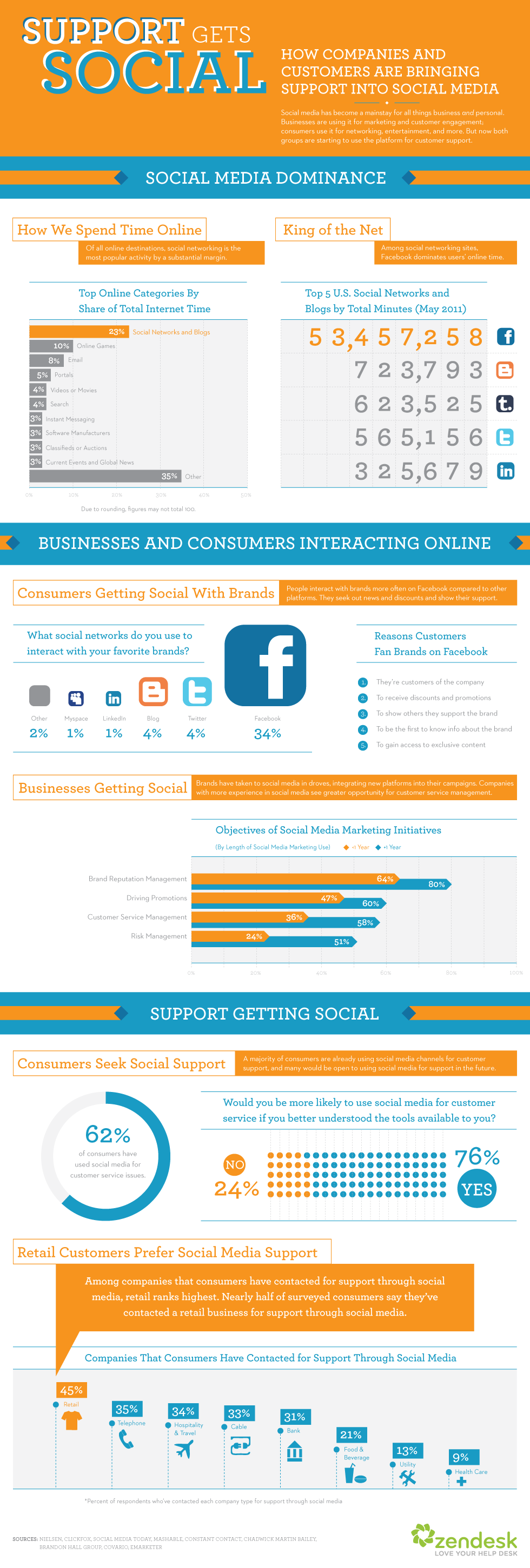Social Media is no longer a trend as much as it is a way of life – gone are the days of picking up the phone to contact our nearest and dearest, or waiting to be called back. Now a quick ‘like’ or re-tweet is often enough for us to enjoy an instant connection, albeit a momentary one.
Although this is all well and good, it shows the immediacy we have come to expect from our social circle – we are always on the go, having multiple dialogues with multiple people, on numerous devices, all over the world sharing events and activities from our day-to-day lives.
While it used to be expected that enquiries would be answered within a couple days, we now expect answers within hours, if not minutes.
It comes as no surprise then that social media has affected our dialogues with businesses too, particularly after a purchasing a product or service. If you have an issue or question regarding a recent purchase, how do you go about contacting the relevant company? Most of us are buying online, removing the face-to-face element of post-purchase queries. And who has the time or patience to sit on the end of a phone?
We now expect to reach companies from anywhere, at any time, and through any device that we choose, from our tablets, smartphones or laptops. While it used to be expected that enquiries would be answered within a couple days, we now expect answers within hours, if not minutes.
The social network boom has created a new revolution in how consumers interact with brands, companies or organisations. The reach and immediacy of Twitter & Facebook has made the voice of the customer an extremely powerful one. Bad experiences can quickly snowball into online customer uprisings leading to big PR disasters.
Brands, of every shape and size are facing increasing amounts of pressure to deliver a better, quicker service over a broader range of channels including social, email, and phone. These days, customers expect to get service at any time of the day or night and assume that this should and will happen.
Studies by Edison Research have indicated that 19% of Twitter users seek customer service via Tweets. With more than 200 million users, this means 38,000,000 customers are seeking service via Twitter.
As is often the case, tech-savvy independents have been the first to embrace the new technologies and communication channels with the larger, more traditional organisations slowly taking up the slack.
Many companies have chosen to make the move to cloud-based Software-as-a-Service (SaaS) solutions. These have proven to be the fastest and most cost-effective alternative to updating on-premise packages. More importantly, these new cloud-based solutions are specifically designed for multi-channel customer service.
On the hardware side, customers and employees do more and more on mobile devices than ever before. In fact, the mobile revolution seems like an unstoppable force with more than 5.3 billion mobile subscribers worldwide (by the way, that’s 77 percent of the world’s population).
The transformation that social media has brought to customer service channels holds significant opportunities for customer service organisations to deliver a truly memorable ‘consumer experience’ with the right processes and tools in place. Happy customers are loyal customers who not only keep coming back for more, but also spread the word about your company and products – which ultimately means more business.
Below is an infographic we created which look at how companies and customers are bringing support into social media (click to enlarge).







